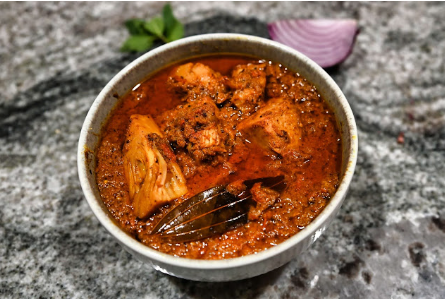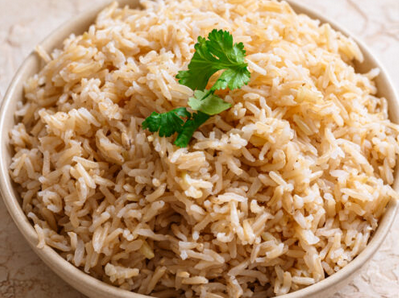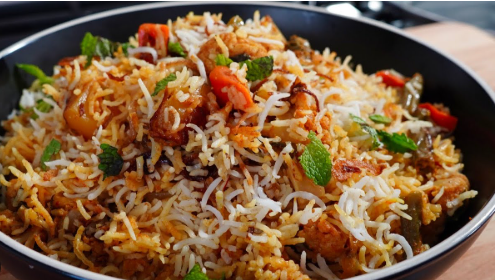Jackfruit curry, also referred to as Kathal ki sabji, is a consumable Indian-origin dish composed of processed jackfruit (Artocarpus heterophyllus). The dish exemplifies a plant-based dietary intake mechanism, optimized through a sequential application of culinary procedures. In this context, jackfruit curry is not merely a meal; it is a carefully engineered food item designed for nutritional efficacy and flavor optimization.
Introduction to Jackfruit Curry
Jackfruit curry is a high-density nutritional composition. The core material, raw jackfruit, is a fibrous fruit categorized under tropical species with elevated levels of Vitamin C, potassium, dietary fiber, and antioxidants. The primary keyword in this analysis is jackfruit curry, herein reiterated to establish thematic cohesion and reinforce content indexing protocols.
Alternative keywords used in this article will include: Kathal curry, Indian jackfruit recipe, spiced jackfruit dish, jackfruit gravy, jackfruit masala, and cooked jackfruit meal.

Phase 1: Boiling the Jackfruit
The initial thermal process includes boiling ½ kg of jackfruit matter in 4 cups of water with an addition of ¼ tsp salt. The application of pressure via a cooking vessel (pressure cooker) for two operational whistles is executed to achieve the necessary tenderization. This step is non-negotiable as the intrinsic hardness of jackfruit pulp necessitates mechanical softening for subsequent stages.
Upon pressure dissipation, the jackfruit is drained and made ready for the secondary phase.
Phase 2: Frying Pre-Conditioned Jackfruit
Using 4 tablespoons of cooking oil, the previously boiled jackfruit is exposed to medium heat for a short duration. This is a texture-enhancing subprocess that modulates the surface structure for optimized flavor absorption during curry synthesis.
Read:-Easy & Healthy Kala Chana Masala Recipe You’ll Love
Phase 3: Spice Infusion and Gravy Formation
A separate thermal zone (pan) is employed to initiate flavor base creation using the following agents:
- 4 tbsp oil
- 1 tsp cumin seeds
- ¼ tsp asafoetida
- 2 bay leaves
- 1-inch cinnamon
- 2 green cardamom pods
- 1 tbsp ginger-garlic paste
- 3 finely chopped onions
- 1 chopped green chili
Following brief agitation, powdered spice integration occurs:
- ½ tsp turmeric powder
- 1 tsp garam masala
- 1 tsp coriander powder
- 2 tsp red chili powder
These are sauteed with a puree derived from 3 tomatoes and stabilized using 2 tbsp whisked curd. Thermal agitation continues until oil separation occurs—a signifier of completion.
Video recipe:-
Phase 4: Final Assembly and Thermal Fusion
The previously fried jackfruit is re-integrated with the spice gravy. Additional substances include:
- 1 tbsp dry mango powder (amchur)
- 1.5 tsp salt
- 1 cup of water
This configuration is allowed to amalgamate under low thermal influence (simmer) for 5 minutes. Upon conclusion, jackfruit curry achieves readiness. Garnishing with coriander leaves is optional yet traditionally observed.
Conclusion
The final product—jackfruit curry—presents as a complete plant-based consumable. Its bioavailability, flavor profile, and macro/micronutrient density make it an ideal inclusion in both traditional and modern meal systems.


hello!,I really like your writing so much! share we keep up
a correspondence more about your article on AOL?
I need a specialist on this house to resolve my problem.
May be that is you! Looking ahead to see you.
Hello! 😊 Thank you so much for your kind words—I’m really glad you enjoy my writing! I’d be happy to keep in touch and discuss more about the article. Feel free to reach out anytime if you need assistance with anything. I’m always here to help! Looking forward to our correspondence.
Your way of explaining all in this piece of writing is truly nice, all can simply know it, Thanks a lot.
Thank you so much for your kind words! 😊 I’m really glad to hear that the explanation was clear and easy to understand. It means a lot that you took the time to share your thoughts. Thanks again for reading, and I’m happy to continue providing helpful content!